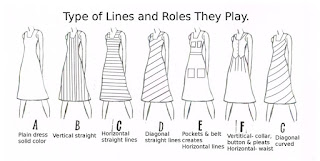Pattern Grading
DEFINITION: Pattern grading is a technique used to increase or decrease the size of a garment pattern according to the measurements in a given size chart. Pattern grading is the drafting process of enlarging or diminishing a style pattern into patterns for other sizes. The function of grading is to see that this is accomplished with proper fit for the other size without changing the style sense of the original model. This can be done manually or digitally using computerized pattern cutting software. These increments are referred to as garment grading rules. Each specific clothing market area and level has different grading rules. Through pattern grading, you can maintain the essence of the garment without altering the shape, fit, dimensions, design, or the balance of the article of clothing. With the use of pattern grading, it is possible to take one design and create alternate dimensions as the size of the dress changes. This allows designers and sewers of apparel to create one middle size, usually size twelve, and then grade up or down as necessary
GRADING TERMINOLOGY: ❖ Grade – The ‘grade’ of a pattern is the incremental increase or decrease in a pattern size at a given cardinal point. For example; a large majority of commercial patterns will have a 2″ grade. This means that there is a 2″ difference between sizes. ❖ Grading – The process of increasing or decreasing the dimensions of a base pattern style. ❖ Cardinal Points – The points on a pattern where it either increases or decreases. E.g: Neck, shoulder, armhole, length, girth etc.
❖ Base pattern – The original pattern created (usually the middle of the size run). This is an industry term. However, in the home setting…the base pattern would be whatever pattern you are working with. For example, in the ITS Insider Exclusive Library….there are certain patterns that are only offered in 1 size, a size 6. This would be your base pattern. ❖ Trueing – is the process of smoothing and shaping angular and curved lines on a seam to create a nice transition. Trueing includes checking to make sure seam lengths match, corners are 90° angles where necessary, as well as folding darts to create proper seam pattern shape. ❖ Size Run – The sizes included in a specific style. For example; small, medium, large, xl…or, 4, 6, 8, 10, 12. ❖ Cut and Spread | Cut and Overlap – The process of manually grading a sewing pattern by cutting the pattern apart and increasing or decreasing its size. ❖ Pattern Shifting – The process of manually grading by shifting a pattern back and forth to increase or decrease its size. ❖ Suppression grading: This term is applied when the amount of suppression in a pattern is increased or decreased. Suppression is all forms of darts, seams, pleats and gathers which areused to control shapes or contours. It is nothing to do with styling. The suppression is to reduce the girth measurements in relation to another adjacent girth measurement. ❖ Balance: These are various interpretations of balance, but it refers to the relationship between the front length from nape over the bust to waist and floor, and back length from nape to centre back waist to floor. It is also used as a general description, as the word suggests, for a lack of distortion. ❖ Nested (stacked) grading: This described the superimposing of one size on another so that the progression of increase is clearly visible.
GRADING TECHNIQUES: In the apparel manufacturing basic pattern grading methods are mainly divided into 2 types. They are 1. Manual pattern grading or two dimensional grading. 2. Computer-aided pattern grading or three dimensional grading. 1. Manual pattern grading or two dimensional grading: The desired range of sizes is created, one by one, using a pattern template. Marks are made around the master pattern at the appropriate distances and the marks the later joined up to form the enlarge pattern. There are two basic methods of pattern grading. These include: • CUT AND SPREAD: Cut and Spread grading method are starts by the use of tracing and marking techniques from the original master pattern to a white paper. Ensure that all the marking lines like grain line, darts are visible here. In this method original patterns are cut vertically into 3 parts and spread the cutting pieces by a specific amount to grade up. Then overlap them to grade down. To do this process, only scissors, a pencil, measurement tape, and a ruler is required. This is the easiest method, which acts as the basis of the other two methods. To perform this method, you must cut the pattern and spread the pieces by a certain amount to grade up, or overlap the pieces to grade down. The only tools you will need for this method are a pencil, tape, ruler, and scissors.
• PATTERN SHIFTING: Pattern shifting is another process of pattern grading. When pattern or fashion designer want to increase or decrease the overall dimensions of a pattern to get different sizes is called pattern shifting. To make the pattern larger, transfer the original pattern onto another sheet of paper. To make it smaller, they will have to trim the edges to the desired dimensions. It is done by moving the master pattern a certain measured distance up and down and left and right using a special designed ruler. To get the same result as the cut and spread method designer redraw the outlines.
Advantages: ▪ Cost effective process Disadvantages: ▪ Time consuming process ▪ Expected accuracy may not be obtained. 2. Computer-aided pattern grading or three dimensional grading: Computed grading (CAD) is the fastest pattern grading techniques. But when it first came, it was only used by larger fashion or apparel manufacturers for their production process. Now CAD is more affordable software. By this method every manufacturer’s get more accurate, precise, detailed patterns in a short time. Computer grading is the most recent development in grading technology. It is also the fastest method. Computer grading, however, is expensive and usually only large manufacturers can afford it. Computer grading takes the processes of the two former methods and digitizes them. There is not a superior method; they are all equally capable of producing a correct garment grade. Computer based grading systems operate in one of two ways: ❖ The grading increments are feed into the computer and the different sizes are generated automatically using the same methods as applied for manual grading.
❖ The pattern for each individual size is calculated separately starting from the data in the size specification charts. The resulting nest of patterns can be displayed to scale on the computer monitor for visual assessment and if necessary, adjustment. Once the pattern set has been generated on the computer, it may be used in various ways, depending on the level of automation in the factory. In a fully automated system, the garment parts will be sorted automatically and arranged into a lay plan which can then be transmitted in the form of a control program to the automatic laying and cutting system. Alternatively, the patterns can be sent to a large plotting device where they will be drawn at full scale to serve as paper patterns for manual cutting. The patterns can also be used in an automatic device for cutting templates from more durable material.
Advantages: ▪ Quick process i.e. less time consumption; ▪ High accuracy may be obtained Disadvantages: ▪ High initial cost is involved ▪ Skilled operator is required.



I'm not sure why but this weblog is loading incredibly slow for me. Is anyone else having this issue or is it a issue on my end? I'll check back later and see if the problem still exists. Design process in fashion in Bangalore
ReplyDeleteWe provide professional sourcing, design development, and production management services within the apparel industry.
ReplyDeletehttps://www.gradehouseltd.com
We provide professional sourcing, design development, and production management services within the apparel industry.
ReplyDelete